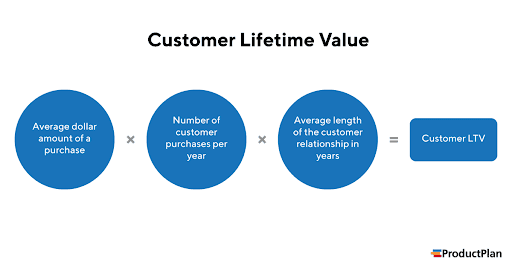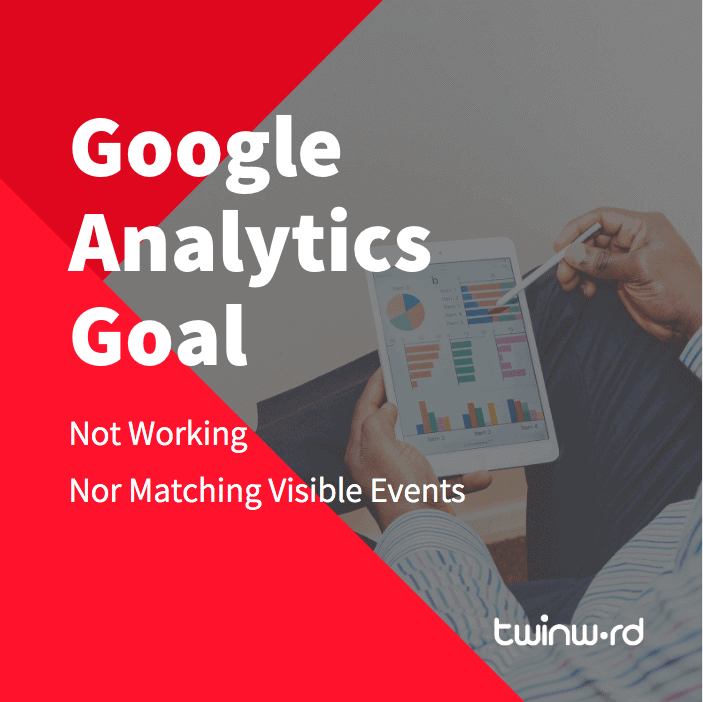
With many organizations providing various ways to use their products, it is vital to analyse all the information these channels generate.
Managing data might not be the most exciting or eagerly anticipated activity, yet doing so effectively has proven crucial for those businesses trying to polish customer experience and looking to discover all the benefits of a solid growth strategy.
Customer experience (CX) analytics enables a more qualitative user experience, better customer engagement, and higher income. CX analytics offers multiple opportunities to use the given data and make it work towards business success while keyword research uncovers the specific terms and phrases potential clients use when searching for solutions online, indicating their needs and preferences.
In this article, we’ll define customer experience analytics, its benefits, use cases, and key metrics to track.
The Definition of Customer Experience Analytics
Collecting, analyzing, and evaluating customer information to polish customer experience is a process known as customer experience analytics.
Additionally, CX analytics provides actionable insights to improve marketing campaigns and evaluate their success.
Utilizing customer experience analytics, you get insights about:
- The ultimate market for your company to hit, and ways to reach potential customers.
- User feedback is taken from multiple channels (direct, surveys, testimonials, review platforms, etc.).
- A full customer journey picture, their blockers, and pain points
- The success of your marketing campaigns and ongoing offers
- Areas for future company growth and improvement
The Value of Data in Customer Experience
One of the best ways to understand your audience, attract more new customers, and establish customer loyalty is through building a culture that has customer experience at the very forefront.
CX directly connects with user engagement, purchase habits, and lifetime value. Utilising customer data analytics, you get assessable and quality insights to move further with developing your business.
Customer experience analytics links to every business area, be it brand promotion, lead generation, recruitment communities, or customer retention.
The data is vital for providing value throughout every touchpoint with your customers and making sure you are doing it on the right channel and at the right time.
While broad metrics can miss the deeper insights and consistency, customer experience analytics enables your actions to be fully data-driven and helps you to:
- Meet and exceed user expectations
- Get to the core of existing issues
- Realise how any business actions impact your customers
- Connect customer touchpoints with existing trends
- Eliminate unnecessary guesswork when it comes to getting better ROI
- Build trust in your brand
When clients know they are heard, and when their experience matches expectations and they get a highly personalized connection with the brand, your sales and marketing efforts will benefit a lot.
Customer Experience and Contact Centres
One of the things that makes a difference in providing a superb customer experience is verbal communication. Not only is it important for building relationships with clients but it’s highly beneficial for resolving issues faster.
To make things easier, you can start by integrating a contact center. With over 90% of clients preferring to speak to a customer service agent, having a single contact center platform enables meaningful and more efficient communication with customers.
Who Needs CX Analytics?
Business Owners
CX metrics show how good your company’s product is and what kind of drawbacks it possesses. It also pinpoints whether the offering lacks certain features that are now trending on the market.
Business owners can then use the information for the product roadmap, to stay flexible, and adjust their strategy to fit the current market dynamics.
The more data-based decisions the company makes, the better the outcome and the bigger its success in the market is likely to be.
Marketing Teams
With CX experience affecting marketing KPIs, CX analytics is crucial for creating campaigns that correlate with user needs.
Not only is it vital to provide a consistent user experience across multiple channels, but also to ensure every interaction with you is personalized and tailored to every customer.
This is where CX analytics comes in handy. With all the data a marketing team can collect from a variety of utilized channels, your company will be able to create a full user profile and get the right information to the right channels at the needed time.
Customer Service Teams
Using reporting in real-time, and all the related predictive analytics tools, customer support agents can make better decisions, change their approach if needed, and make a timely follow-up based on the data they get from CX analytics.
With analytics, contact center agents always have a full customer profile, with all their recent purchases, resolved or pending issues, and set preferences.
The latter enables customer support to react faster and address concerns more effectively, growing customer satisfaction and reducing churn.
How Customer Experience Analytics Can Benefit You
Provide a Better Customer Experience
One of the key areas of CX analytics is identifying segments of your business’s target audience and realizing what they react and respond to. More tailored experiences that you give to your clients entails more benefits for your business.
People have a lot of preferences. Some of them customers willingly share, others remain hidden unless you dig into them on your own.
With insights from customer support software, you get access to all the data about your customers, their behavior, recent interactions, and concerns.
This data serves as your guide toward creating an excellent experience for your clients, as you consider every pain point that might stop them from staying with you and every key feature they value the most.
As a result, you get a clearer picture of what should be done. For instance, you decide to experiment with AI bots to improve response time. Or the marketing team sees that Instagram is currently a good way to interact with your customers and attract a target audience, and so on.
Make Data-Driven Decisions
Going for objective decisions is always better than relying on one’s intuition. Gut feeling is not always wrong, but you need particular metrics to consistently make more relevant and efficient decisions in building a successful business.
CX analytics helps your teams remove the guesswork and make every new step based on data rather than a good feeling. Foremost, you need to aggregate data from various channels manually or automatically (via integrations).
If you’re using Salesforce as a basic CRM, use a Salesforce data integration to collect customer records; if you’re active on Facebook, export customer and Facebook Ads data from there. Some integrations even include data visualization features. For example, you can incorporate insights using Facebook Ad report template and refine your strategy.
The data you get will help the company tweak its strategy. Marketers polish their campaigns based on the target audience and their expectations. Meanwhile, customer support teams improve CX based on weekly customer feedback and preferences.
Eliminate Customer Blockers
You can have the most up-to-date product with all the recent features, yet users might still face certain difficulties along the way.
The problem can lie in poor UX, a lack of appealing CTAs, poorly rendered emails, or any other seemingly small detail. You will never know unless you check.
Tracking such metrics as customer effort, for instance, can give you insights into the amount of effort your clients make to find the page they need, complete a registration, or make a purchase.
With the given feedback, you can easily get rid of customer blockers, improve the flow, and ensure every client gets to the checkout page or renews their subscription.
Reduce Customer Churn
If you only find out that your clients are not satisfied whenever they leave for good, your company might be in trouble.
One cannot measure the customer relationship based on the churn rate. You need to see the facts indicating customer dissatisfaction, analyze them, and act on time to remove the source and ensure customer retention.
There might be multiple reasons for customer churn:
- Poor UX/UI
- Lack of features
- Pricing changes
- Non-responsive support team
- Competitors’ success
- Hard payment procedure
Use analytics to track weak areas and work on either improving or eliminating them.
If you notice that a person who has been renewing their subscription for the past five months has an overdue bill or a canceled plan, it’s just time to get in touch and see if there is anything that stops him from coming back.
With analytics, you can dive deeper into user profiles, their buying behavior, and user flows. This allows you to spot issues earlier and invest more time and effort into customer retention.
Come Up With New Product Features
If you have created a detailed user profile with all the pain points indicated, it will be very easy for the marketing team to predict further user behavior. This is why companies such as Amazon or Apple succeed. Arguably, thanks to CX analytics, they are always one step ahead.
Customers adore organizations that help them get rid of those problems people never knew existed in their lives. If you are looking to outperform, utilize data-driven predictions, identify the trends, and act accordingly.
Customer data analytics will assist with introducing those features people have not even thought about or anticipated the possibility of having.
Key CX Analytics Metrics to Track
CSAT
This metric evaluates customer satisfaction and showcases to what extent you fulfilled their needs or resolved their issue.
As a rule, the focus of CSAT is to identify customer satisfaction toward a certain product or company’s service by asking how satisfied they are.
The answer can either be given in the form of a number of stars (out of 5 or 10) according to the level of their satisfaction or choosing on a scale:

Source: Qualtrics
NPS
This metric is leveraged to get insights into how people see your brand, how willing they are to suggest it to others, and whether there’s a place for improvement.
A regular NPS measurement scale usually looks like this:
 Source: Product Plan
Source: Product Plan
Sometimes, for those users who hit six and below, you can offer additional questions to know what went wrong and whether there’s anything the company can improve to make their experience better.
People who hit 9-10 are the loyal clients (so-called promoters) who will share brand recommendations. In contrast, those who hit extremely low scores (detractors) are not only likely to leave but also to spread bad word of mouth afterward. Detractors should be contacted and listened to. If you are to lose a client, make every effort to end on a positive note.
A good NPS is 50% and above. To calculate the score, you need to take the promoter’s percentage and deduct it from the detractor’s percentage.
Churn
To look at the pace of losing customers, you need to calculate the churn rate. Churn rate tracking shows how well the business is doing and steps in whenever the churn score gets too high.
This is how you calculate the rate of churn:

Source: Salesforce
For each industry, the average churn rate varies. According to Statista, the churn rate for the big-box electronics industry is 11%, while telecom and wireless get up to 21%.
The main point here is that every company experiences churn. The important thing is to avoid getting a higher score than you usually do.
Retention
A customer retention score is one of the most straightforward scores for looking into clients’ loyalty toward your brand and understanding the amount of repeated business.
Tracking retention is vital as it is always cheaper for your business to retain existing users rather than acquire new ones.
User retention is usually shown in percentage form and can be calculated for a week, a month, or a full year:

Source: New Breed Revenue
Churn and retention are interconnected and require your attention. Using CX analytics, marketing, and promotional approaches, you can improve customer retention. For example, think of providing special offers or discounts, establishing loyalty programs, or elaborating on a referral campaign, etc.
CLV

Source: Product Plan
The metric of customer lifetime value showcases the client’s financial value during the full time of their interaction with your company. Knowing this metric, you can track users with higher value and target the right clients who can potentially bring in more revenue.
CX Analytics Highlights
As you can see, customer experience analytics is a great activity to deliver a top-notch customer experience, enhance related processes (like marketing and sales), and impact business performance overall.
Let’s summarise the essential points we’ve covered:
What is CX Analytics?
Customer experience analytics is a set of practices helping organizations gather and analyze clients’ data. Anything from reviews on social channels to their answers in different surveys; from buying history to the exact number of times they’ve visited the website or completed a purchase.
Who Gains More Advantages From Utilising CX Analytics?
While it’s true to say that everyone in the company gets advantages from using analytics, business owners, marketing teams, and customer service teams are the ones to benefit the most.
Company owners can use data to develop more effective product roadmaps and business strategies while marketers can see customer churn causes and act upon them.
Why Should Businesses Leverage CX Analytics?
Analytics allows businesses to build an accurate user profile by looking into thousands of facts about each and every client.
As a result, companies get a chance to provide enhanced CX, make data-driven decisions, get rid of customer pain points, and reduce churn, constantly being one step ahead of their customers.



